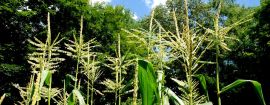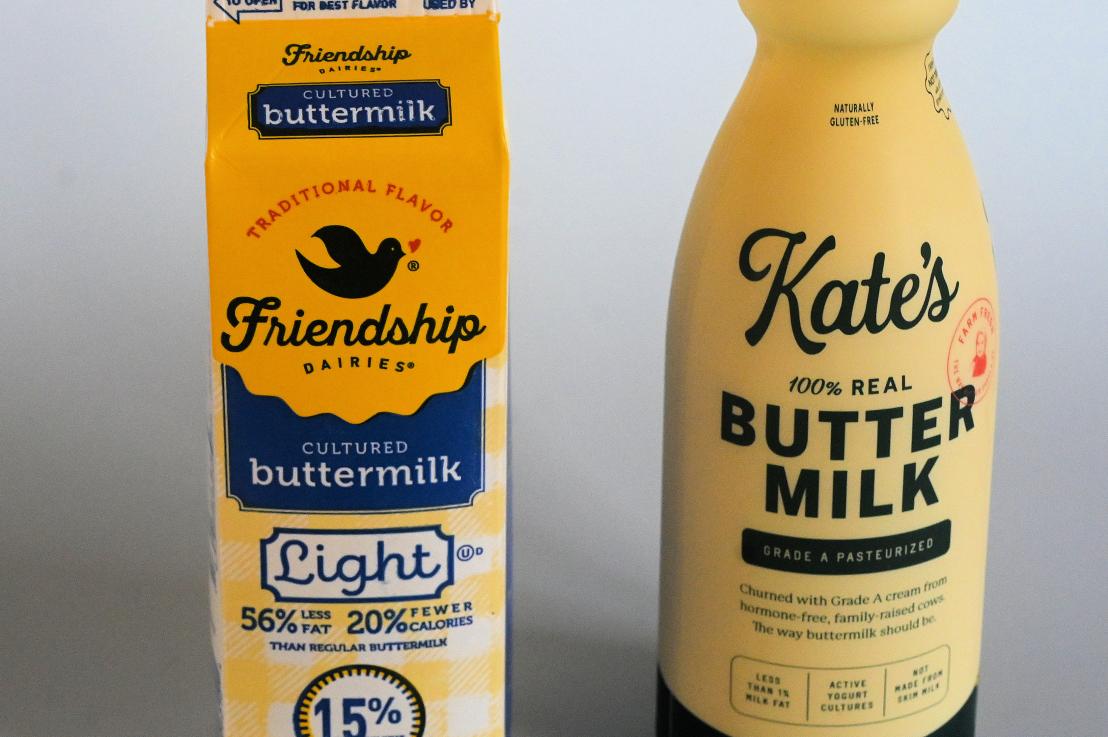I first tasted buttermilk at my grandmother’s house in Lincoln, Nebraska. My mother and I had taken the train from Columbus out to Lincoln to visit her family there. I was probably 10 or 12 years old. I came in from playing with my cousin Steve, climbing trees and the like, to find that they were going to make pancakes with buttermilk. I tasted the buttermilk and didn’t like it much. “But,” they said, “wait till you taste the pancakes. They will be like you poured a lot of butter into them!”
And, yes, the pancakes were very good indeed.
Some years later, when I started collecting recipes, I got that buttermilk pancake recipe from my mother’s sister, Elsie, and have saved it ever since. Since it was originally my grandmother’s it is probably over a hundred years old, and was probably made from real buttermilk. Here it is:
- 2 cups flour
- 2 eggs
- 2 tsp baking powder
- 1 Tb sugar
- 1 tsp baking soda
- ½ tsp salt
As a memory guide, Elsie pointed out that you can summarize the recipe as 2-2-2-1-1-1/2.
Mix dry ingredients and add buttermilk until you get a “thickish batter.” Cook in a large cast-iron pan or a griddle. Turn the pancakes when they start to show bubbles.
Buttermilk was originally formed by allowing the milk to stand to separate the cream allowing it to ferment a bit. Then, after churning, they let the buttermilk ferment and thicken. But once centrifugal cream separators were developed, you didn’t have to let the cream set and begin to ferment before churning the butter. So, another way to make buttermilk was developed, where they took part skim milk and added the same bacteria that were found in fermenting the original buttermilk. These were usually Lactococcus lactis and Leuconostoc citrovorum. This was called “cultured buttermilk” and is commonly found in the US, where there is little original buttermilk available.
I have been making excellent pancakes using Friendship Buttermilk for over 20 years. But recently, our local market dropping the Friendship buttermilk, offering only Kate’s Buttermilk. You can still buy it at ShopRite and at some Stop and Shops.
So, it seemed like a good idea to compare the two. We made up two identical batches of dry ingredients and eggs, and added buttermilk to each until we reached a “thickish batter” stage. We initially cooked 4 pancakes on each time on our Presto griddle. But recognizing that the griddle’s heating was uneven and measurement of each pancake aliquot was difficult we then simply put one carefully measured ¼ cup of batter on the griddle from each recipe, and placed them close together so they would have the same cooking temperature.
The result:

The pancake on the right, made with Friendship cultured buttermilk, clearly rose higher than the one made with Kate’s buttermilk. We would assume then that the Friendship buttermilk is slightly more acidic and reacts with the leavening more that the Kate’s recipe did.
How did they taste? We tasted a slice of each pancake without any added butter or syrup. The Friendship pancake had a rich buttery-milky flavor, but the Kate’s pancake was quite bland, with no distinct flavor at all.
So, how do the two buttermilks themselves taste? Not surprisingly, the Friendship buttermilk tasted more like buttermilk. The Kate’s just tasted sour. No real butter-milky flavor at all. So, we are sticking with the Friendship for our pancakes. An experiment with biscuits showed similar differences in rising as well.
Sorry to say, despite all the positive press Kate’s has gotten, we found it quite disappointing.



